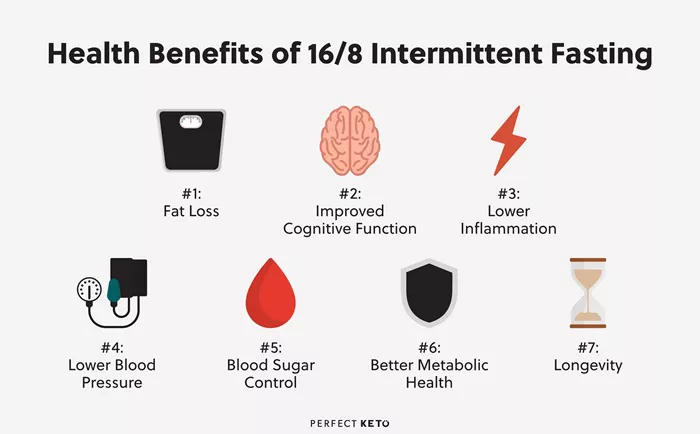In the world of skincare, the order in which you apply your products can have a significant impact on their effectiveness. One common question that arises is whether serum or moisturizer should be applied first. Understanding the functions and characteristics of both serums and moisturizers is crucial in determining the correct sequence for optimal skin health.
What is a Serum?
A serum is a lightweight, highly concentrated skincare product. It is formulated with a high concentration of active ingredients such as vitamins (like vitamin C, E), hyaluronic acid, peptides, and antioxidants. These ingredients are designed to target specific skin concerns. For example, a vitamin C serum is often used to brighten the skin, reduce the appearance of dark spots, and boost collagen production. Hyaluronic acid serums are excellent for hydrating the skin and plumping it up, making it look more youthful and reducing the appearance of fine lines. Peptide serums can help with firming and improving skin elasticity.
Serums have a thinner consistency compared to moisturizers. This allows them to penetrate deeply into the skin. They are able to reach the deeper layers of the epidermis and even the dermis in some cases. Because of their high concentration of active ingredients and ability to penetrate deeply, serums are like a power boost for the skin. They can deliver a significant amount of beneficial substances to where the skin needs them the most.
What is a Moisturizer?
A moisturizer, on the other hand, has a primary function of locking in moisture and providing a protective barrier on the skin. It contains a combination of emollients, humectants, and occlusives. Emollients, such as ceramides and fatty acids, help to smooth and soften the skin. Humectants like glycerin attract water to the skin’s surface, keeping it hydrated. Occlusives, such as petrolatum or beeswax, form a barrier on the skin to prevent water loss.
Moisturizers come in different forms, including creams, lotions, and gels. Creams are usually thicker and more suitable for dry or mature skin as they provide a more substantial amount of moisture and protection. Lotions are lighter and better for normal to combination skin. Gels are often used for oily or acne-prone skin as they have a lighter texture and are less likely to clog pores. The main role of a moisturizer is to maintain the skin’s hydration levels and protect it from external factors such as pollution, wind, and cold weather.
The Order of Application: Serum First
When it comes to applying serum and moisturizer, the general rule is to apply the serum first. There are several reasons for this. Firstly, as mentioned earlier, serums have a thinner consistency and are designed to penetrate deeply into the skin. If you apply a moisturizer first, it can create a barrier on the skin’s surface that may prevent the serum from penetrating effectively. The active ingredients in the serum will not be able to reach the deeper layers of the skin where they can have the most impact.
For example, if you are using a vitamin C serum to brighten your skin, applying a moisturizer on top of it before it has had a chance to penetrate may reduce its effectiveness in reducing dark spots and improving skin tone. The moisturizer may block the serum from interacting with the skin cells that are responsible for producing melanin and collagen.
Secondly, serums are formulated to deliver a concentrated dose of active ingredients. By applying it first, you ensure that the skin absorbs as much of these beneficial substances as possible. Once the serum has been absorbed, the moisturizer can then be applied to seal in the moisture and provide the protective barrier. This way, the skin benefits from both the targeted treatment of the serum and the hydration and protection of the moisturizer.
Let’s say you are using a hyaluronic acid serum. Applying it first allows it to draw moisture into the skin. Then, when you apply a moisturizer, it helps to keep that moisture locked in. If you were to reverse the order, the moisturizer might not allow the hyaluronic acid to fully absorb and do its job of hydrating the deeper layers of the skin.
How to Apply Serum and Moisturizer Correctly
To apply a serum correctly, start with clean, dry skin. Take a few drops of the serum (usually 3 – 5 drops depending on the product and the area of the face) and gently pat it onto the skin. You can use your fingertips and start from the center of the face and work outwards. Avoid rubbing the serum vigorously as this may cause it to be absorbed too quickly on the surface and not penetrate deeply enough. Patting helps to ensure that the serum is evenly distributed and has a better chance of penetrating into the skin.
After the serum has been absorbed, which usually takes a minute or two, you can then apply the moisturizer. Take an appropriate amount of moisturizer (about a pea-sized amount for the face) and gently massage it onto the skin in upward and outward motions. This helps to promote circulation and also ensures that the moisturizer is evenly spread. Make sure to cover the entire face, including the neck and décolletage if desired.
Benefits of the Correct Order
Applying serum first and then moisturizer can lead to several benefits. Firstly, it maximizes the effectiveness of both products. The serum can target specific skin concerns effectively, and the moisturizer can keep the skin hydrated and protected. This combination can result in improved skin texture, reduced appearance of fine lines and wrinkles, enhanced skin tone and brightness, and better overall skin health.
For example, if you have been using a peptide serum for firming and a moisturizer for hydration, over time, you may notice that your skin feels firmer and looks more supple. The peptide serum is able to stimulate collagen production in the deeper layers of the skin, and the moisturizer helps to maintain the skin’s elasticity and hydration, giving you a more youthful appearance.
Secondly, it can help to prevent skin issues. By keeping the skin properly hydrated and protected with the correct order of product application, you can reduce the risk of dryness, flakiness, and sensitivity. When the skin is well-hydrated, it is also less likely to develop acne and other skin problems. The serum can address specific issues like inflammation or hyperpigmentation, and the moisturizer can create a stable environment on the skin’s surface.
Exceptions and Special Considerations
While the general rule is to apply serum first, there are some exceptions. In some cases, if you are using a treatment product that is very thick or has a specific formulation that requires it to be on the skin for a longer period, you may need to follow the instructions provided by the manufacturer. For example, some retinoid creams or gels are designed to be left on the skin for a certain amount of time before applying other products. In such cases, it is important to read the product label carefully and follow the recommended application order.
Another consideration is for those with very sensitive skin. Some serums may contain ingredients that can cause irritation. If you have sensitive skin, it may be advisable to do a patch test first. You can also consider using a serum that is formulated for sensitive skin or has a more gentle ingredient list. Additionally, you may want to wait a bit longer between applying the serum and the moisturizer to ensure that the skin does not react negatively.
Conclusion
In conclusion, in the debate of which should go first, serum or moisturizer, the answer is generally serum. Serums, with their high concentration of active ingredients and ability to penetrate deeply, should be applied first to target specific skin concerns. Moisturizers then follow to lock in moisture and provide a protective barrier. By following this correct order of application and using the products correctly, you can enhance the effectiveness of your skincare routine and achieve healthier, more beautiful skin. However, it is important to be aware of any exceptions or special considerations based on the specific products you are using and your skin type. With proper knowledge and care, you can make the most out of your serum and moisturizer and enjoy the benefits they offer for your skin’s long-term health and appearance.
Related topics:
Should I get serum or moisturizer: A Comprehensive Guide



































